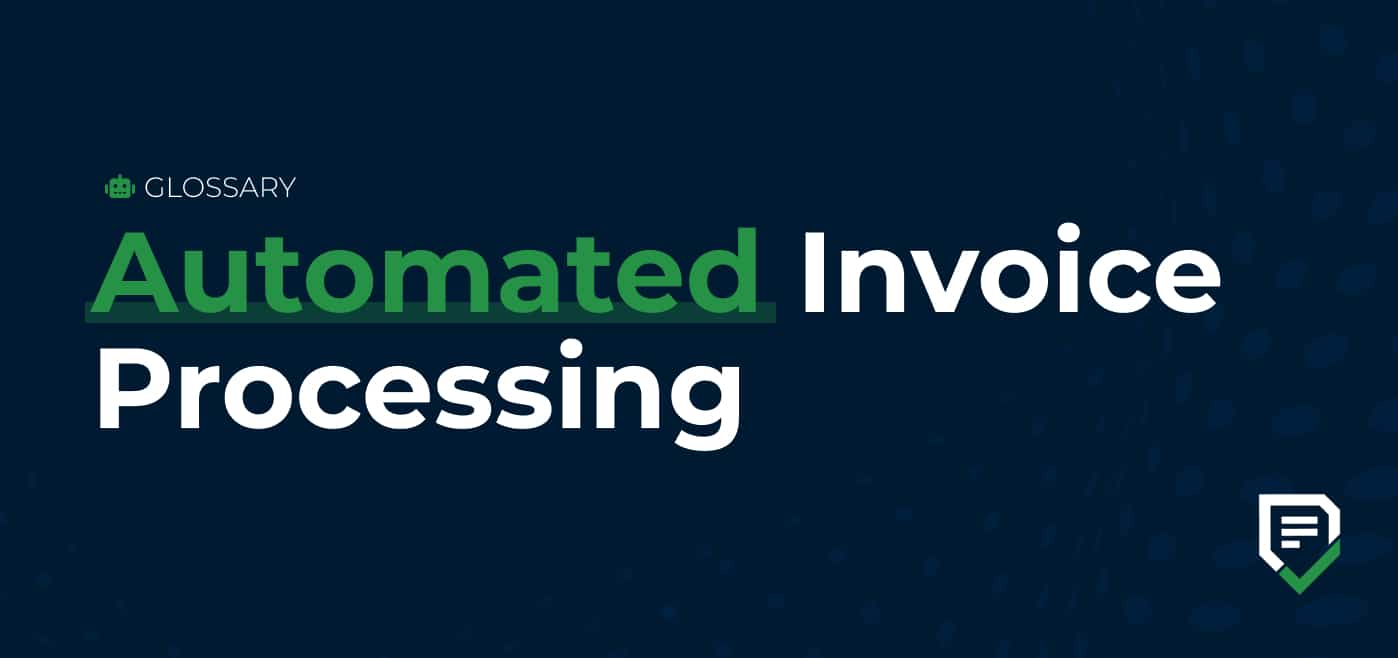Invoice processing is an essential part of a business. It ensures businesses receive timely payments and maintain a steady cash flow. However, processing invoices manually is tedious, time-consuming, error-prone, and costly.
By automating the invoicing workflow, you can help your clients process payments faster, improve accuracy, save costs, and strengthen vendor relationships.
What is Automated Invoice Processing?
Automated invoice processing uses software to streamline the handling of invoices from receipt to payment. It leverages accounting machine learning and artificial intelligence (AI) technologies to capture, validate, and process invoice data with little or no human input.
The result? Increased efficiency, reduced human errors, faster approvals and business growth.
How Does Invoice Automation Work?
Invoice Receipt & Extraction
The system receives an invoice via email, fax, scanned documents, client portals, or paper. Optical Character Recognition (OCR) extracts essential information from the invoice, such as the vendor’s name, invoice number, date, line items, and total amount.
Validation and Matching
The software validates the extracted information by matching it against purchase orders, vendor records, or contracts and flagging discrepancies for review.
Approval Workflow
Once validated, it routes invoices based on predefined rules. Approvers receive notifications and can review and approve invoices directly within the system. After approval, the system automatically posts the invoice to the firm’s ERP or accounting software.
Payment Processing
Automated systems can schedule payments based on company policies and terms agreed upon with vendors. They offer multiple payment gateways so vendors can receive payments through their preferred method.
Reconciliation and Reporting
The system automatically reconciles payments with invoices and updates the general ledger. It also generates real-time reports on key data, like cash flow, processing times, approval rates, and payment statuses.
Advantages of Automating Your Invoice Processes
Here are some benefits of implementing automated invoice processing for your clients.
1. Increased Efficiency and Speed
The average AP department takes almost 11 days to process a single invoice, from receipt to payment. This staggering delay strains vendor relationships and disrupts cash flow.
Invoice automation reduces the time required to process payments. What used to take days or weeks can often be completed in a few hours, leading to faster payments and improved efficiency.
2. Cost Savings
The administrative costs associated with manually processing invoices can add up quickly. Automated invoice processing reduces paper usage, minimizes labor costs, and improves cash flow.
3. Accurate Invoice Data Entry
Manual data entry is prone to human errors such as typos or miscalculations. Automating the process minimizes these risks, allowing your clients to create invoices and track payments accurately. It also reduces disputes and helps maintain positive relationships with vendors.
4. Scalable
As your client’s business grows, so does the number of invoices they process. A scalable solution grows with the company, handling increasing invoice volumes without compromising performance or hiring additional staff.
5. Improved Client-Vendor Relationship
Delayed or incorrect payments can lead to disputes, strained partnerships, and potential supply disruptions. Invoice automation helps strengthen client and vendor relationships by ensuring timely and accurate payments.
6. Better Compliance and Reporting
Automated systems offer robust reporting and auditing capabilities, helping your clients maintain compliance with financial regulations. They can generate reports on key metrics such as payment cycles, outstanding invoices, and cash flow forecasts.
7. Improved Cash Flow
Companies that automate their invoice processing experience increased cash flow and savings. The reason is simple: Automation allows your clients to take advantage of early payment discounts and avoid late fees. These savings can quickly add up over time.
Challenges with Automating Invoices
Let’s look at some limitations associated with implementing automated invoice processing.
1. Over-reliance on Manual Methods
Despite the availability of automation solutions, many firms still receive and send paper invoices. According to Ardent Partners Research, AP teams still receive 48% of invoices manually.
Paper-based invoicing leads to inaccurate data, human errors, lengthy approvals, and delayed payments, ultimately frustrating AP teams and vendors.
With invoice processing software, your clients can streamline the process, allowing employees to dedicate more time to profitable client work like advisory services.

Data Quality and Accuracy
Automation heavily relies on existing data quality. If the data within the firm’s current systems is incorrect, outdated, or inconsistent, it can lead to errors. As such, maintaining high-quality data is essential for successful automation.
Fear of Uncertainty
Your client’s employees may not want to change their established routines. They might be worried about their job security, fear of redundancy or feel overwhelmed by learning a new software. This is normal, as change often brings uncertainty.
However, with clear communication, proper training, and ongoing support, you can ease their concerns and encourage adoption.
Implementation Cost
The initial costs of purchasing, integrating, and ongoing renewal are high, especially for small businesses with limited budgets. Learning to use it also requires time and expertise. Therefore, some firms may struggle to justify the upfront investment required.
Regulatory Compliance
Financial processes are subject to various regulations, and automated systems must follow these guidelines. This requirement can be complicated, especially regarding sensitive customer data.
How to Implement Invoice Automation
Evaluate Current Invoicing Processes
Review your client’s existing processes to identify bottlenecks and areas for improvement. Understanding the current structure will inform decisions about areas that require automation.
Select the Right Software
It is critical to choose the appropriate automated invoice processing software. Look for solutions that meet your client’s needs, integrate with existing systems, and include data capture, workflow management, and reporting capabilities.
Provide Adequate Training
Technology is only as good as the people using it. That’s why thorough training on using the new system is essential. Provide tutorials, workshops, and ongoing support to ease the transition and build employee confidence.
Create a Phased Implementation Plan
Rather than implementing automation all at once, consider a phased rollout. Start with one area and gradually expand automation across the firm. This approach allows you to make adjustments as needed.
Monitor Performance & Optimize Processes
Track key performance indicators (KPIs) such as invoice processing time, error rate, and cost savings to refine automation workflows and improve efficiency.
Features to Look for in Invoice Automation Software
When selecting an automated invoice processing system, consider the following essential features:
1. Intelligent Data Capture: A robust automation system should include Optical Character Recognition (OCR) to extract key invoice details. It should also support multiple formats, including PDFs, scanned images, and email attachments, to eliminate manual data entry.
2. Automated Approval Workflows: The software should allow you to set up customizable approval hierarchies with role-based permissions. This will enable the right person to review and approve invoices.
3. Real-Time Invoice Tracking & Visibility: A centralized dashboard tracks invoice status in real-time, allowing your clients to monitor pending approvals and payments.
4. Fraud Prevention & Compliance: Invoice automation software should have duplicate invoice detection and AI-driven anomaly alerts that flag potential fraud. It should also comply with tax regulations to avoid penalties.
5. Seamless Integration with Accounting & ERP Systems: Integration with ERP and accounting systems maintains seamless workflow automation and reduces payment processing delays. As such, the software should be compatible with major platforms like Financial Cents, QuickBooks, and Xero.
6. Early Payment Discount & Cash Flow Optimization: Automation tools should schedule payments and remind clients about early payment discounts, helping your clients optimize their cash flow.
The Future: What to Expect
As technology advances, automated invoice processing will evolve. Here are some key trends that could shape its future.
- Artificial Intelligence and Machine Learning: Integrating AI in accounts payable, as well as machine learning will enhance data extraction capabilities, allowing systems to learn from historical data and improve accuracy. Predictive analytics will enable businesses to anticipate cash flow trends and potential payment delays.
- Integration with Other Financial Systems: Greater connectivity between automated invoice processing systems and other financial tools, such as ERP and accounts payable software, will lead to streamlined processes and more comprehensive financial management.
- Advances in Data Analytics: As businesses collect vast amounts of data, leveraging advanced analytics will provide deeper insights into invoicing patterns, cash flow management, and vendor performance. This information will be crucial for strategic decision-making.
- Remote Accessibility and Cloud Solutions: Cloud solutions facilitate remote access to invoicing systems, allowing finance teams to manage processes from anywhere. This flexibility is valuable in today’s remote work environment.
Conclusion
Automated invoice processing is no longer a luxury—it’s necessary for businesses that want to stay competitive and increase revenue.
By replacing manual, error-prone processes with streamlined, technology-driven solutions, your clients can boost efficiency, cut costs, strengthen vendor relationships, improve accuracy, and maintain a healthy cash flow.
Use Financial Cents to automate manual tasks and manage your firm.

